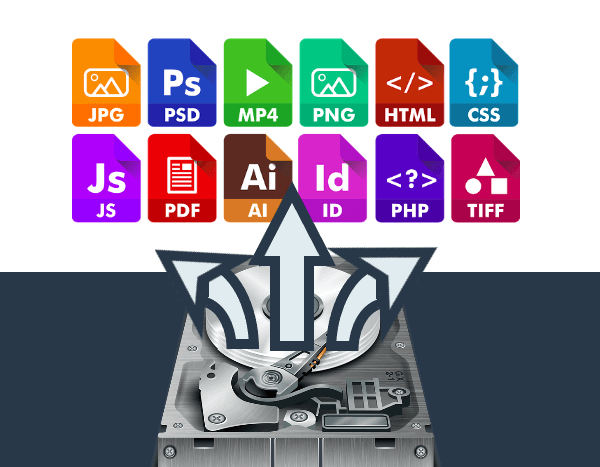How to Fix the Recovery Server Could Not Be Contacted Error
Encountering the "recovery server could not be contacted" error can impede data recovery efforts. Uncover reasons behind the issue, explore viable fixes, and leverage MyRecover for seamless file retrieval.
Imagine the frustration of attempting to recover vital files, only to encounter the discouraging message: "recovery server could not be contacted." This common obstacle impedes individuals and businesses alike, disrupting data recovery processes and inducing stress.
Potential Causes of the Recovery Server Could Not Be Contacted Error:
Several factors contribute to the inability to contact the recovery server, including network issues, server downtime, misconfigured settings, or software conflicts. Firewall restrictions or antivirus software may inadvertently block communication, hindering data retrieval efforts.
Risks of Uncontacted Recovery Server:
Failure to reach the recovery server jeopardizes data integrity and business continuity. Inaccessible files may lead to data loss, project delays, and operational disruptions. Prolonged downtime risks eroding customer trust and tarnishing organizational reputation.
Feasible Fixes to Address the Recovery Server Issue:
1. Check Network Connectivity:
Background: A stable internet connection is vital for server communication.
Steps: Verify network settings, restart routers or modems, and ensure proper connectivity.
2. Verify Server Availability:
Background: Servers may undergo maintenance or experience downtime.
Steps: Check server status online or contact the administrator for updates.
3. Review Firewall and Antivirus Settings:
Background: Security software may block server communication.
Steps: Adjust firewall settings or temporarily disable antivirus software.
4. Update Software and Drivers:
Background: Outdated software versions or drivers may interfere with communication.
Steps: Ensure all software and drivers are up-to-date for compatibility.
5. Reset Network Settings:
Background: Corrupted network configurations hinder communication.
Steps: Reset network settings to default configurations and clear DNS cache.
Recover deleted/lost data via MyRecover
MyRecover stands as a beacon of hope in the realm of data recovery, offering unparalleled solutions for retrieving lost, deleted, or inaccessible files. Built on a foundation of cutting-edge technology and user-centric design, MyRecover empowers users to navigate through the most challenging data loss scenarios with ease and efficiency.
Key Features of MyRecover:
Intuitive Interface: MyRecover boasts a user-friendly interface that caters to both novice and experienced users, ensuring effortless navigation and operation.
Advanced Scanning Algorithms: Equipped with state-of-the-art scanning algorithms, MyRecover conducts thorough scans of storage devices, identifying lost files with precision and accuracy.
Versatile Recovery Options: MyRecover supports a wide array of file formats and storage media, enabling users to recover documents, photos, videos, and more from hard drives, SSDs, USB drives, and memory cards.
Operating Steps for MyRecover:
Download and Install MyRecover:
Visit the official MyRecover website and download the installation package.
Follow the on-screen instructions to complete the installation process.
Launch MyRecover:
Double-click the MyRecover icon on your desktop to launch the application.
Select Recovery Source:
Choose the recovery server as the source location within the MyRecover interface.
Initiate Scan and Recovery:
Click "Scan" to initiate a comprehensive scan of the recovery server.
MyRecover meticulously analyzes the storage media, identifying recoverable files based on file signatures and metadata.
Preview and Select Files:
Once the scanning process is complete, MyRecover presents a detailed list of recoverable files.
Users can preview files to ensure their integrity and select specific items for recovery.
Save Recovered Files:
Choose a secure location to save the recovered files, ensuring they remain accessible for future use.
In Conclusion:
Navigating the challenges of an uncontacted recovery server demands patience, persistence, and the right tools. By understanding the causes, implementing fixes, and leveraging MyRecover, users regain control over data recovery processes with confidence.
FAQs:
Q1: Can I recover files without contacting the recovery server?
A1: Successful communication with the recovery server is essential for initiating the recovery process.
Q2: What if the recovery server remains uncontacted after troubleshooting?
A2: Contact the server administrator for assistance or explore alternative recovery options.
Q3: Is MyRecover compatible with all recovery servers?
A3: Yes, MyRecover supports a wide range of configurations for seamless file recovery.
Q4: Can I recover files from the recovery server remotely?
A4: Yes, MyRecover allows remote file recovery processes with access to the recovery server.
Q5: How long does MyRecover take for file recovery?
A5: Duration varies based on factors like file size and server connectivity, but MyRecover prioritizes efficiency without compromising data integrity.



